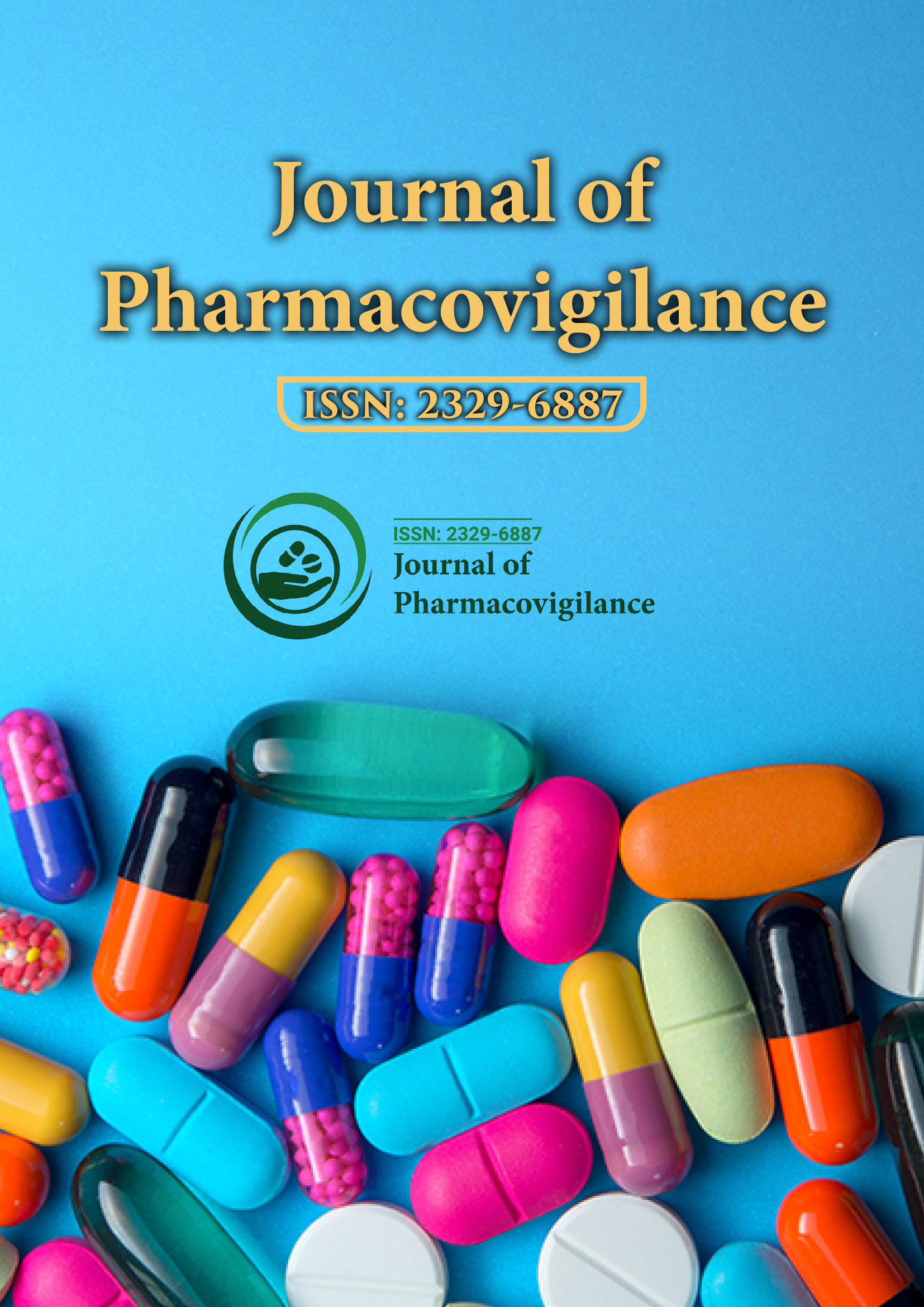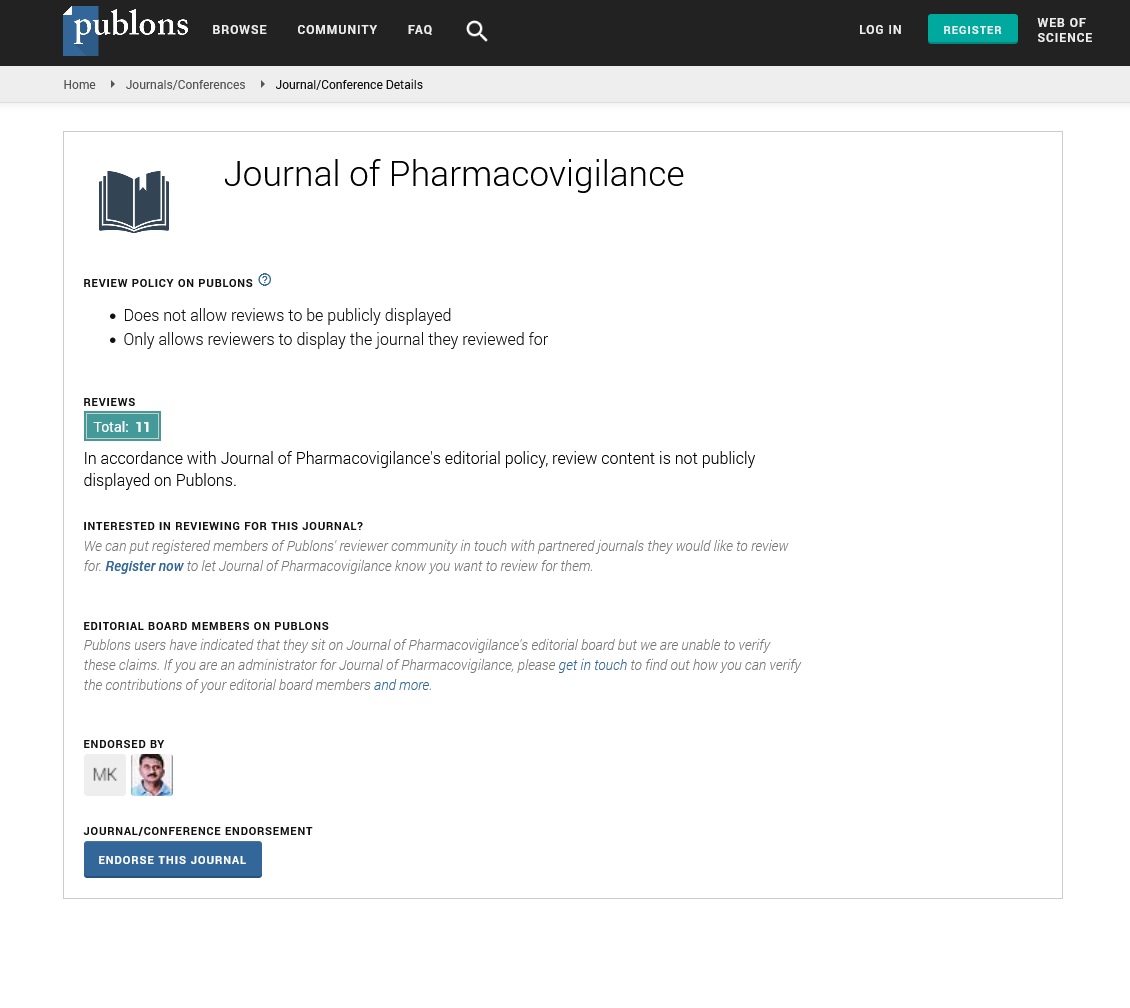Indexed In
- Open J Gate
- JournalTOCs
- The Global Impact Factor (GIF)
- RefSeek
- Hamdard University
- EBSCO A-Z
- OCLC- WorldCat
- Publons
- Euro Pub
- Google Scholar
Useful Links
Share This Page
Journal Flyer

Open Access Journals
- Agri and Aquaculture
- Biochemistry
- Bioinformatics & Systems Biology
- Business & Management
- Chemistry
- Clinical Sciences
- Engineering
- Food & Nutrition
- General Science
- Genetics & Molecular Biology
- Immunology & Microbiology
- Medical Sciences
- Neuroscience & Psychology
- Nursing & Health Care
- Pharmaceutical Sciences
Perspective - (2021) Volume 9, Issue 11
An Overview on Clinical Pharmacology its Various Branches and History
Neha Singh*Received: 29-Oct-2021 Published: 19-Nov-2021
Introduction
Clinical pharmacology has been characterized as "that discipline that instructs, explores, outlines strategy, offers data and guidance regarding the activities and legitimate employments of prescriptions in people and executes that information in clinical practice". Clinical Pharmacology is intrinsically a translational discipline supported by the essential study of pharmacology, occupied with the trial and observational investigation of the demeanour and impacts of medications in people, and focused on the interpretation of science into proof based therapeutics. It has a wide extension, from the revelation of new objective atoms with the impacts of medication utilization in entire populations. The principle point of clinical pharmacology is to generate information for ideal utilization of medication's and the act of 'proof based Medicine'. Clinical pharmacologists have clinical and logical preparing that empowers them to assess proof and produce new information through all around planned investigations. Clinical pharmacologists should approach enough short term patients for clinical consideration, instructing and schooling, and examination just as be regulated by clinical subject matter experts. Their obligations to patients incorporate, yet are not restricted to, dissecting antagonistic medication impacts, therapeutics, and toxicology including conceptive toxicology, cardiovascular dangers, perioperative medication the executives and psychopharmacology.
Current clinical pharmacologists are additionally prepared with information investigation abilities. Their ways to deal with examine information could be displaying and reproduction procedures (e.g., populace examination, non-straight blended impacts demonstrating) [1].
Branches of Clinical Pharmacology
1. Pharmacodynamics
2. Pharmacokinetics
3. Rational Prescribing
4. Adverse Drug Effects
5. Toxicology
6. Drug interactions
7. Drug development
8. Molecular Pharmacology
9. Pharmacogenomics [2]
History
Therapeutic utilizations of plant and creature assets have been normal since ancient occasions. Numerous nations have composed documentation of their initial customary cures of many sorts, similar to China, Egypt, and India. A portion of these cures are as yet distinguished as accommodating in the present society, yet most have them have been disposed of because of the way that they were futile and possibly unsafe. During the 1500s, discontinuous endeavors were made to propel the techniques for medication. Schools were made to show these advances, yet none of these strategies was viable and this prompted the mastery of thought that professed to disclose everything concerning science and infection with no experimentation to back it up.
These schools would concoct unusual strategies that they accepted were the responses to sickness and injury. They believed that an injury could be recuperated assuming a balm was applied to the weapon, and that sickness was brought about by having an excess of bile and blood in the human body. Around the seventeenth century, hypothetical medication was saved and overlooked, and individuals began to utilize medication that depended on examination and experimentation. Doctors started to apply these new strategies to the conventional medications and cures that they had in their own way of life. This is the point at which the studies of the planning and utilization of clinical medications started to create, despite the fact that they actually needed techniques to test a portion of the theories they had concerning how medications functioned in the body [3].
By the late eighteenth century and mid nineteenth century, the advancement of the strategies for exploratory physiology and pharmacology by Franois Magendie and his understudy Claude Bernard. From the late eighteenth century to the mid twentieth century, progresses were made in science and physiology that established the framework that was required to comprehend drugs at the organ and tissue level. The advances that were made right now enabled producers to make and sell medication that they professed to be real however were useless. These cases couldn't be assessed until the normal remedial ideas were restored in medication around 60 years after the fact. Around that equivalent time, significant turn of events and development in science started. Data began to heap onto natural substrates and medication developments when new strategies and ideas emerged. During the last 50 years, numerous new and some old medication bunches were presented. There has been considerably more quick development in even the most recent thirty years, with understanding the foundations of medication activity at a sub-atomic level. This new data has assisted with distinguishing the sub-atomic instruments of numerous dugs and separate receptors and clone them. These techniques supported the numerous revelations managing receptors. The development of logical standards of pharmacology is still on-going today [4].
REFERENCES
- Waldman SA, Terzic A. Clinical Pharmacology & Therapeutics: the next five years. Clin Pharmacol Ther. 2015; 97:2–6.
- Smith BP, Huang SM. Novel approaches to address challenges in global drug development. Clin Pharmacol Ther. 2015; 97:196–9.
- Waldman SA, Terzic A. Companion diagnostics at the intersection of personalized medicine and healthcare delivery. Biomark Med. 2015; 9:1–3.
- Pacanowski M, Huang SM. Precision Medicine. Clin Pharmacol Ther. 2016; 99:124–9.
Citation: Singh N (2021) An Overview on Clinical Pharmacology its Various Branches and History J Pharamacovigil 9:344. doi10.35248/2329-6887.21.9.344.
Copyright: © 2021 Singh N. This is an open-access article distributed under the terms of the Creative Commons Attribution License, which permits unrestricted use, distribution, and reproduction in any medium, provided the original author and source are credited.

